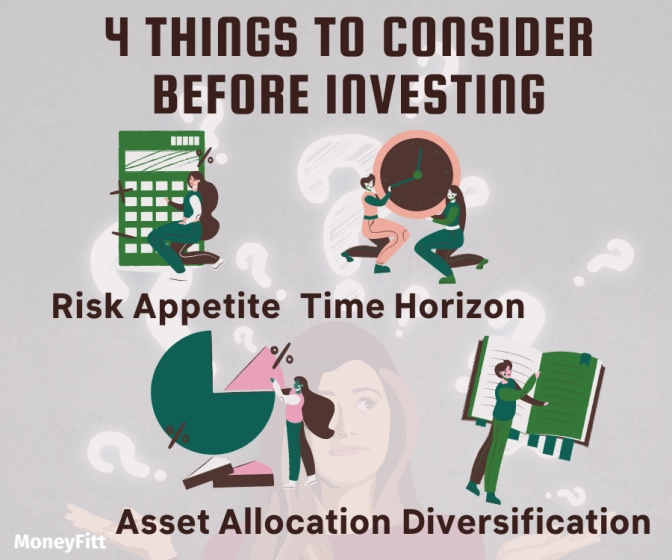Investing Basics: Risk Appetite, Time Horizon, Asset Allocation, and Diversification
The basics to growing your money!
- Investing is vitally important, so educate yourself as much as you can and do not get involved with investments you do not understand.
- Investments should suit the time frame of your goals and the level of risk that you are comfortable with. Remember that there is a trade-off: the lower the risk, the lower the likely long-term return.
- Diversification is a vitally important practice used to limit the risk of financial loss in order to protect and enhance your potential long-term returns. Diversification can take place by allocating investments across a spread of assets as well as within an asset class.
The Basics
Investing is all about planning for the future. The investment landscape is complex and ever-changing, but the fundamentals can be easily understood. It pays dividends to study the basic concepts and asset classes, to best judge where the gains lie in the long run.

Before considering investing, you may want to set up an emergency fund. And before that, make sure that you are free of high interest debt (e.g. credit card balances that you are rolling over, or payday loans)! It is important to make a start as soon as you can after that - don't wait until you "are rich" before you start on your investment journey!
Four Things to Consider Before Investing

1) Risk Appetite
Risk appetite is your ability and readiness to lose some (or maybe even all) of your original investment for potentially greater returns. How much of a dip in the value of your investments are you prepared to see? In financial markets, risk is most often measured in terms of volatility, or how much the price swings in either direction. In real life, we usually only worry about the downside!
Aggressive investors are prepared to lose money in the short term for greater potential future returns, whereas conservative investors side with investments that have weaker future upside potential in return for the security of limited potential downside. If you are unsure as to what your investment risk appetite is, you could take one of the many free questionnaires available online to assess your risk tolerance.
2) Time Horizon
Investments should suit the time frame of your goals. Depending on the level of risk you choose with your investments, you can stack your chances of triumph in your favour by avoiding big financial blow-ups with a diversified portfolio. It's essential to control rather than avoid risk. Investing is a long-term game, so avoid letting short-term volatility disrupt your goals. For those with long-term horizons, you may see better potential gains in higher-risk assets, such as shares. Alternatively, if you have more immediate needs, lower volatility, and higher liquidity investments are often more appropriate – e.g. Government Savings Bonds or even fixed-term deposits at the bank.
3) Asset Allocation
Asset allocation is about how much of each different asset type you have in your portfolio, such as shares, bonds and cash. How you allocate your investments between the various asset classes should reflect your current risk-reward profile, and should be revisited regularly because a) the balance between asset classes will shift over time as different investments rise and fall, requiring rebalancing, and b) your own needs may change with age, changing life stage or specific circumstances (e.g. having a kid, losing a job, receiving an inheritance).

4) Diversification
Diversification is an essential practise for both professional and non-professional investors, used to minimise the risk of financial loss and therefore enhancing your potential returns over the long term.
The most common (and practical) way to achieve diversification is to do the following:
- Actively choose to invest in multiple asset classes within a portfolio (even ones which are currently out of favour)
- Actively look to have a higher number of investments within each asset class
At a high level, the thinking is that it is unlikely that all assets move in the same direction at once, meaning that short-term losses in one asset class may be offset by profits in another. Overall, a well balanced and well-managed portfolio (which is not aggressively and constantly being traded!) can be expected to appreciate in value over time.
Diversification is also important within asset classes. For example, it's not advisable to have 100% of your share portfolio with the same characteristics, e.g. growth shares. Different segments of an economy perform differently under various economic circumstances, so a diversified investment portfolio helps to balance out your exposure to various economic and business cycles.
THE BASICS TO INVESTING. COMPLETED. ✅
Sources:
